The David Collection presents its most extensive special exhibition since the museum reopened in 2009.
SHAHNAMA - The Colorful Epic About Iran's Past
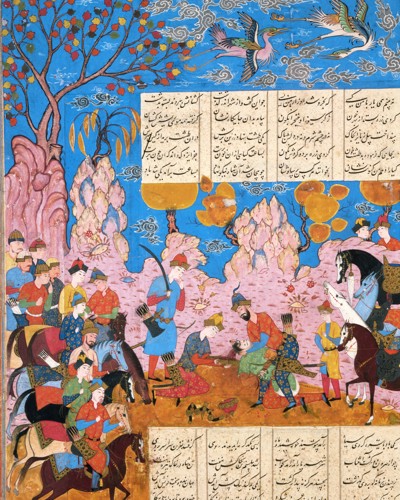
A special exhibition displaying miniature paintings from the Iranian national epic Shanama
Why the Shahnama?
The Shahnama (The Book of Kings) is world literature. It has been a “classic” for centuries, especially in the Persian-speaking parts of the world, but also in India, Turkey, and the Middle East. Even in Germany, Great Britain, and the U.S.A., the old text has been translated and exhibitions of the epic’s countless illustrations have been held in recent years.
The Shahnama was written by the Iranian poet Firdawsi and finished in the year 1010. In his enormous work – probably the world’s longest poem, with over 50,000 verses – he recounted the story of Iran from a bygone mythical era to the 7th century, when Arab armies overran the ancient kingdom. As in the works of Saxo Grammaticus and Homer and in fairytales, the Shahnama combines history, thrilling narratives, dramatic battle scenes, and love stories that often have no happy ending. The epic has always been exceedingly popular in the Persian-speaking part of the Islamic world and still plays an important role as a national symbol in Iran.
Not many people in Denmark have heard of the Shahnama. This exhibition aims at remedying the situation.
A National Identity
Interest in Iran and Iranian culture is growing. The Persia of the past and present-day Iran can in many ways be seen from the same sense of selfhood. Firdawsi’s aim was to create a magnificent and indelible picture of ancient Persia, a national identity that he and the aristocracy of which he was part could be proud of. Because of its distinctiveness, it rejected the culture and history of the invading Muslim rulers. The Shahnama is consequently world history seen from an Iranian perspective, a polemic for a national identity and an age of glory before the advent of Islam. Since it was written in Persian, it was also a revolt against the alien Arabic language. There are conspicuously few Arabic loan words in the work, despite the fact that there were many in the Persian language during the author’s day. The content of the epic moreover does not conform to the historiography of the Koran.
Universal Themes
The Shahnama deals with themes that are universal and still valid today: friendship and enmity, freedom and tyranny, love and hate – to name just a few. The contrasts between these dualities are rarely unequivocal, however, since there are many reasons for the ways in which the heroes and villains of the Shahnama act. The work is full of good stories and legends about heroes and supernatural beings of the kinds found in The Lord of the Rings and Star Wars, for example. In addition, the Shahnama has been the source of inspiration for works of art that still exert a great power of attraction.
The Paintings
The paintings form the core of the exhibition. Instead of focusing on their context in art history, the exhibition follows the chronology in the Shahnama – from the creation of the world to the conquest of Iran by the Muslim Arabs. This progression is illustrated from start to finish with works from the David Collection. The majority of the paintings are from Iran, but some also come from India and Turkey. The motifs in the Shahnama are part of a pictorial tradition that can be followed from generation to generation. Examples are “Siyawush’s Trial by Fire,” where the young prince rides through a sea of flames, and “The Court of Gayumarth,” which describes a world at the dawn of time when man and beast lived in harmony with one another and with nature. Some illustrations from the Shahnama have achieved iconic status and are among the most famous Persian paintings today.
The Exhibition
This special exhibition gives the public a unique opportunity to experience an ancient, exotic, and dramatic world in pictures. The stories are played out through nearly 60 works of art, in addition to a display of weapons. Visitors will be able to study details in the miniatures with a magnifying glass. All the captions are in Danish and English. Apart from one miniature, which is on loan, all of the works of art are from the David Collection’s own holdings.
A fully illustrated catalogue in Danish and English editions with articles on several aspects of the Shahnama epic will be published in conjunction with the exhibition.
A reception will be held on Thursday, March 17th, from 4 to 6 p.m. to mark the opening of the exhibition. Members of the press who wish to attend the reception should contact the museum’s head of communications, Sonja Wiesener, at [email protected] for an invitation.
On April 13th at 7 p.m., David’s Bazaar will feature a lecture in Danish about the exhibition by Peter Wandel, with the sensual title “Violent Beauty.”
Tickets at DKR 50 can be bought at billetlugen.dk; click here for more information.
There will be free guided tours of the special exhibition during the museum’s opening hours. See the spring program for guided tours here.
Selected artworks
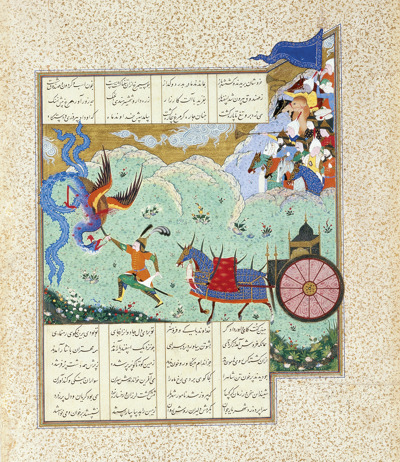
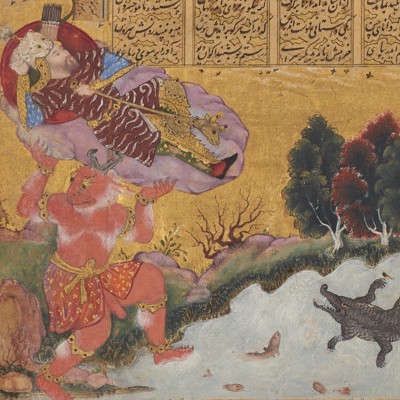
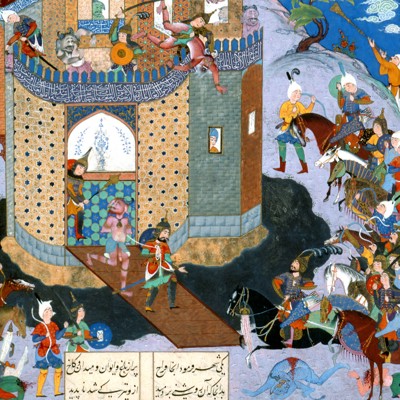

Modtageren af C.L. Davids Fødselsdagslegat 2025 er offentliggjort
Karen Kjældgård-Larsen modtager C.L. Davids Fødselsdagslegat 2025 for hendes nyskabende og humoristiske fortolkninger af den klassiske keramiktradition.
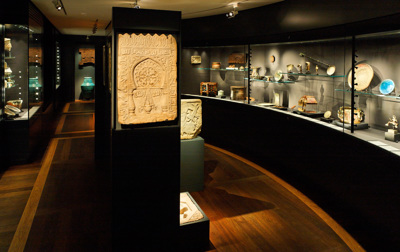
Museumstekniker til Davids Samling
Davids Samling søger en ansvarsbevidst og kompetent museumstekniker med ansvar for sikring og it.
Davids Samling er et privat, fondsejet museum beliggende i hjertet af København, med en af verdens fineste
samlinger af kunst fra den islamiske verden og nyere dansk og ældre europæisk kunst og kunsthåndværk.
Du får en central rolle i at drive og videreudvikle museets sikringssystemer og ansvar for daglig opfølgning af
vores forskellige it-systemer. Du skal samtidig være med i udviklingen og implementeringen af museets
arbejde med bæredygtighed og grøn omstilling.
Dine opgaver vil bl.a. omfatte:
• Vedligeholdelse og optimering af museets sikringssystemer.
• Drift og support af museets it-systemer i samarbejde med eksterne partnere.
• Deltage i opsætning af tekniske og digitale løsninger i forbindelse med udstillinger.
• Deltage i udviklingen og implementering af museets bæredygtighedsinitiativer og grønne omstilling.
Du bliver en del af en spændende og dynamisk arbejdsplads, hvor der er ressourcer til at tænke ambitiøst og
langsigtet. Du kommer til at arbejde tæt sammen med engagerede kolleger, som alle har stor kærlighed til
museet og samlingerne. Hverdagen hos os er kendetegnet ved godt humør og høje ambitioner udfoldet i
smukke omgivelser.
Du refererer til museumsforvalteren og indgår i teknikafdelingen, som består af medarbejdere med
ansvarsområder inden for vagttjeneste, opsyn, sikring, it, udstillingsopbygning, kunsthåndtering og rengøring.
Både i afdelingen og på museet generelt har vi en uformel omgangstone og lægger vægt på et godt socialt
arbejdsmiljø.
Om dig:
• Du har en teknisk eller håndværksmæssig baggrund og erfaring med sikring og tekniske anlæg.
• Du har interesse for bæredygtighed og grøn omstilling.
• Du er detaljeorienteret, ansvarsbevidst og god til at skabe struktur i din opgaveløsning.
• Du arbejder godt både selvstændigt og i samarbejde med kolleger.
• Du har en ren straffeattest.
Ansættelsesvilkår:
Stillingen er en fuldtidsstilling. Du ansættes som funktionær på individuel kontrakt med løn, pension mm. efter
aftale.
Ansøgningsfrist:
Du skal søge senest den 22. juni 2025 kl. 16, og vi håber du kan starte 1. august 2025.
Første samtale forventes afholdt d. 24. og 25. juni. Ansøgning, CV og relevante bilag sendes til
[email protected] med emnefeltet: "Museumstekniker".
Har du spørgsmål, er du velkommen til at kontakte museumsforvalter Simon Heide på telefon 3373 4949 eller
e-mail [email protected]
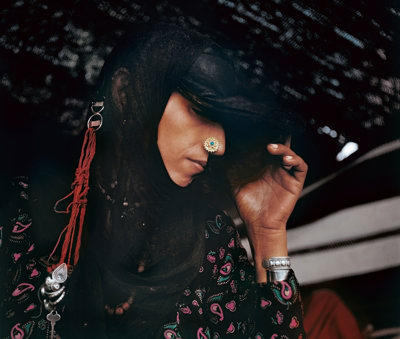
Jette Bang - Portræt af beduinerne i Qatar
I foråret 1959 ankom den danske fotograf Jette Bang (1914-1964) til Qatar. Med sin imponerende baggrund som en af Danmarks førende fotografer havde Bang allerede gjort sig bemærket for sine skildringer af Grønlands oprindelige befolkning gennem både fotografier og film. Nu vendte hun blikket mod Mellemøsten – nærmere bestemt beduinerne i Qatar.
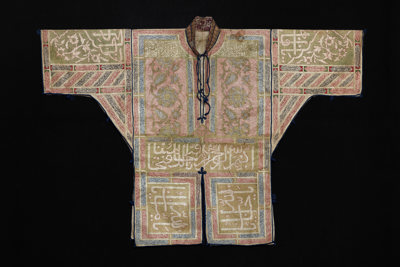
Mere end Ord. Kalligrafi fra den islamiske verden.
Fra den 24. maj kan du gå på opdagelse i den islamiske kalligrafi som kunstart og dens historie, når Davids Samling åbner dørene til særudstillingen ”Mere end ord – kalligrafi fra den islamiske verden”. Og titlen skal tages helt bogstaveligt, for ordene og de smukke bogstaver antager flere betydninger.